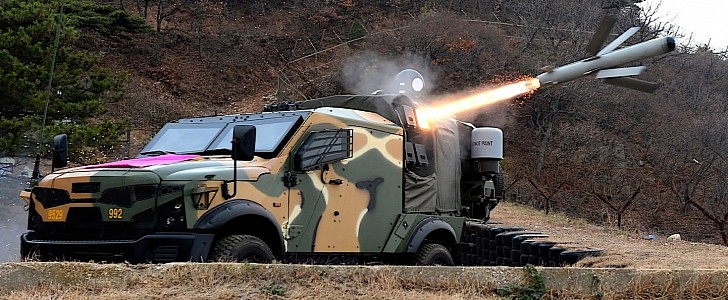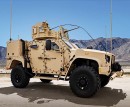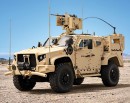In the world of tactical vehicles, there probably is no greater name than Oshkosh. The American company is behind the Joint Light Tactical Vehicle (JLTV), a family of four machines that can suit pretty much all the needs of the infantry units using them.
Born back in 2005, the JLTV is currently a common sight in the inventory of the American military. Oshkosh offers it as General Purpose, Heavy Guns Carrier, Utility, and Close Combat Weapons Carrier, and that means there’s great versatility when it comes to the weapons that can be fitted on them.
The latest one to prove its worth on a JLTV platform is the Lockheed Martin-made Spike Non-Line-of-Sight (NLOS) missile system. Lockheed said this week it successfully integrated the Spike on an Oshkosh machine, on behalf of the U.S. Special Operations Command (USSOCOM).
“The combination of Spike NLOS’s long-range and precision-strike capabilities with the JLTV’s superior agility will result in next-level mobility and mission effectiveness for our operators,” said in a statement Jerry Brode, vice president of Close Combat Systems at Lockheed Martin Missiles and Fire Control.
“This advanced weapon system’s real-time video imagery allows operators to alter or abort mission while en route to a target, providing users with more options in critical moments.”
Spike is an electro-optical/infrared missile system that can be used on ground, airborne, and maritime platforms. It comes with a seeker and wireless datalink that feeds back to its operator real-time video and allows in-flight control, effectively making it capable of changing direction or aborting the mission well after launch.
The missile has a range of 32 km (20 miles), and is already being used by the American military, but also six other allied nations. Getting it on board a moving platform is fairly easy, claims Lockheed, as it requires only a standard palletized interface and less than 20 minutes to become operational.
The latest one to prove its worth on a JLTV platform is the Lockheed Martin-made Spike Non-Line-of-Sight (NLOS) missile system. Lockheed said this week it successfully integrated the Spike on an Oshkosh machine, on behalf of the U.S. Special Operations Command (USSOCOM).
“The combination of Spike NLOS’s long-range and precision-strike capabilities with the JLTV’s superior agility will result in next-level mobility and mission effectiveness for our operators,” said in a statement Jerry Brode, vice president of Close Combat Systems at Lockheed Martin Missiles and Fire Control.
“This advanced weapon system’s real-time video imagery allows operators to alter or abort mission while en route to a target, providing users with more options in critical moments.”
Spike is an electro-optical/infrared missile system that can be used on ground, airborne, and maritime platforms. It comes with a seeker and wireless datalink that feeds back to its operator real-time video and allows in-flight control, effectively making it capable of changing direction or aborting the mission well after launch.
The missile has a range of 32 km (20 miles), and is already being used by the American military, but also six other allied nations. Getting it on board a moving platform is fairly easy, claims Lockheed, as it requires only a standard palletized interface and less than 20 minutes to become operational.








